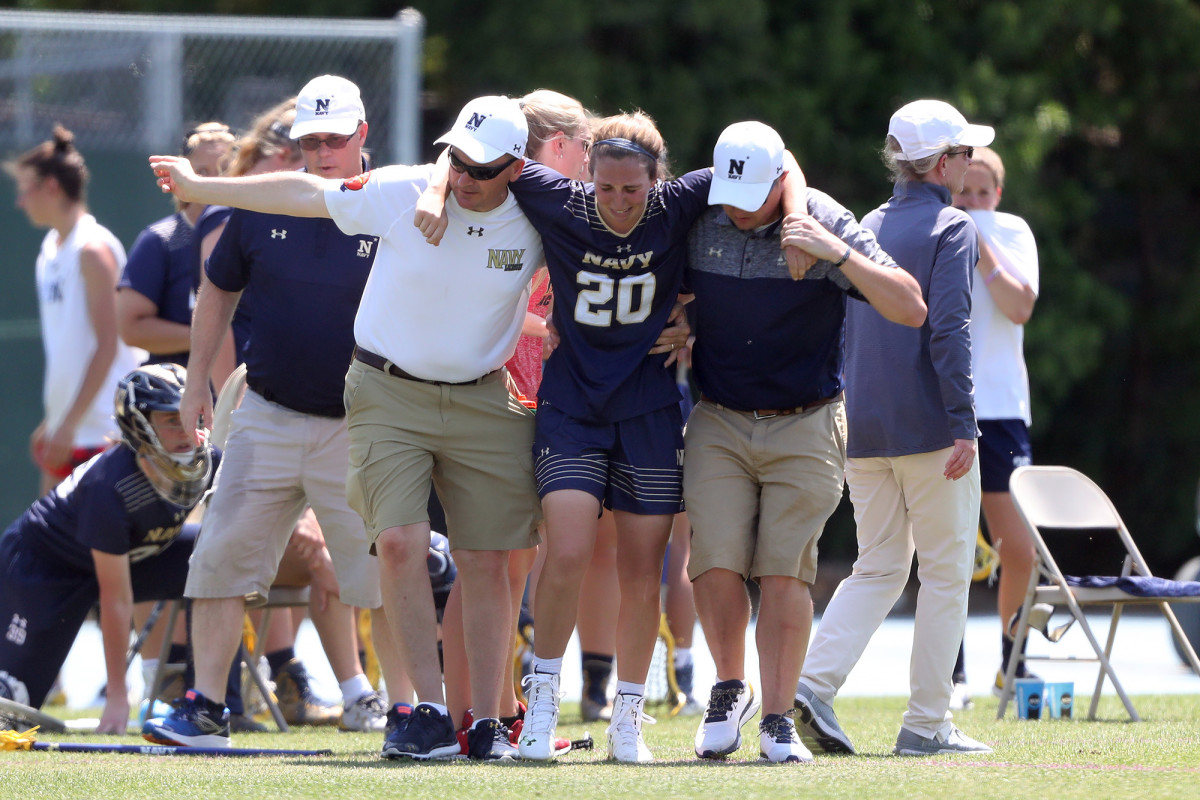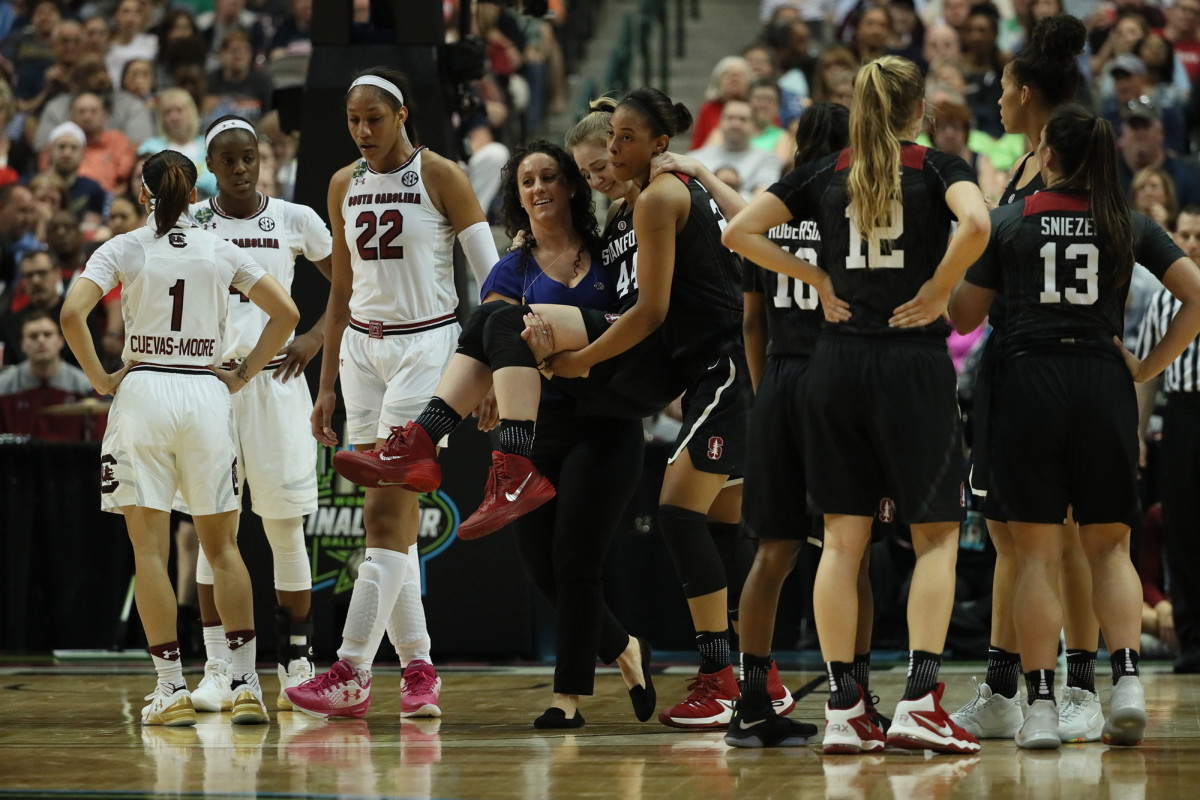Athletes Are Paying the Physical Price of Playing College Sports

A willingness to do what it takes, to practice hard, and play harder, characterizes many that play collegiate sports. For a new generation, one that has risen to the college ranks by finding a sport and sticking to it, thousands of hours have been sacrificed for the chance to play in college. In many ways, especially for those sports without a professional option, these athletes reach the pinnacle of competition.
But athletes at top Division I colleges could be on track for chronic injury problems later in life. The baseball player that pitches through elbow pain, believing that Tommy John surgery will leave him better than before; the running back that continues playing on a badly sprained ankle; the midfielder that hurries back from an ACL injury, putting herself at risk for another shredded ligament.
“You get a physical on the way in,” says Paul Weinacht, a former offensive lineman at Stanford University, “But there isn’t a physical on the way out. No one asks about your injuries when you leave.”
Unfortunately, while there are lifelong benefits to college sports, those torn ligaments and tendons aren’t left behind as college memories, instead exacting a decade-long toll. When old injuries get in the way of future physical activity, collegiate athletes are no more armored against the health problems associated with inactivity than those who have never set foot on a field or court.
In terms of cardiovascular disease risk and overall health, a previous life as a highly fit, competitive athlete is much less important than a current regimen of physical activity. While it does promote longevity and disease resistance, exercise comes down to: what have you done for me lately?
According to a just-published article in Sports Health, 67% of a group of former Division I athletes who sustained a major injury and 50% reported chronic injuries, a finding that was 2.5 times higher than that seen in non-athletes. While former football players were the most represented sport of the group studied, it also contained athletes from diving, baseball and soccer.

“I definitely think research indicates strong evidence that injuries during one’s sports career can potentially be associated with adverse health outcomes later in life,” says Zachary Kerr, a researcher at the University of North Carolina’s Center For The Study of Retired Athletes. “We have seen evidence of this specifically with concussions in retired NFL players, but there growing evidence that this issue is not specific to professional sports nor to concussions.”
Because of that, former athletes who had stopped exercising had an increased risk of cardiovascular disease compared to students that were inactive in college but picked up exercise later in life. In one study, performance was significantly worse for former college athletes compared with non-athletes for percent body fat, mile time, sit-to-stand test, and a push-up test. Unfortunately, as this research suggests, the most accomplished athletic individuals often lose their capacity to stay active later in life.
There has been a great deal of focus, and rightly so, on the health problems experienced by former professional football players. But injuries aren’t just a football problem, or a concussion issue, they’re a quality of life issue. Life-changing injuries can be disturbingly easy to come by—ACL injuries in female athletes for example—even in non-contact sports like volleyball, basketball and soccer.
Even 15 years removed from college football, Weinacht can list the college injuries that still bother him: sore shoulders, a screw in his foot and a knee that never recovered from a torn ACL and cartilage damage. As a fifth-year senior on a path to the NFL, Weinacht hurt his knee in a collision with a defensive lineman, an injury from which he never recovered.
Despite multiple surgeries and extensive physical therapy, Weinacht feels increasingly unable to exercise as his knee limits running or basketball, activities that he would like to use to stay in shape. “I’m the youngest guy in the gym on the elliptical,” he jokes.

Far from bitter though, because of the memories and friendships he gained while competing at the highest levels of college football, Weinacht would do it all over again. He feels fortunate for graduating with a Stanford degree, setting him up for a life after football. However, he knows that many aren’t so lucky. “Some college athletes end up on an island, without any help for their future,” says Weinacht.
Of course, many collegiate athletes continue to physically thrive, well after their college careers have finished. Gray Garrett, a volleyball player at UCLA, went through the same injuries experienced by a lot of volleyball players—a bad shoulder, sprained ankles—but avoided any significant injuries while in college.
“A lot of it has to do with good luck, in my opinion,” says Garrett, “Obviously there are things you can do to get stronger but for the most part I think it is just something you are blessed with or without.” Garrett still plays basketball two to three times a week, along with the occasional surfing and tennis, without being hampered by any major problems.
But for those like Weinacht, the major injuries sustained while playing collegiate sports—ACL tears, concussions, ankle sprains and cartilage injuries—limit future activity levels and quality of life. According to research, 40% of former Division I athletes were diagnosed with osteoarthritis after college, compared with 24% of non-athletes.
Of course, college athletic programs aren’t indifferent to the injuries suffered by their athletes. Programs invest heavily in the health of their athletes, as most schools have an athletic training staff, team doctors and physical therapists, all with the goal of keeping the athlete on the field or court.
However, while universities cover the costs related to the injuries sustained while participating in athletics during the four years of a college career, the access to sports medicine professionals stops when the athlete walks off campus. Janet Simon, a professor at Ohio University and the lead researcher for the Sports Health study, believes that the NCAA and schools need to do more.
“College athletes need guidance on how to make the transition from the intensity of college sports, namely developing programs that educate athletes on the importance of life-long activity and how to find activities which may give them satisfaction and enjoyment,” says Simon.
Kerr believes that an ideal intervention would be one that not only considers the numerous physical and mental components of health, but one whose effects would be sustainable, allowing the athlete to reap its benefits throughout life. While the NCAA does not have any such programs in place, several universities and conferences have begun to address the transition from college athletics to good post-college health.
The University of Washington has educational programs aimed at helping athletes at the end of a college career transition into post-college life, including opportunities for athletes to meet with a sports psychologist or nutritionist. Dr. Kim Harmon, head football physician for the university, says the school is also part of a Pac-12 initiative dedicated to researching athlete health and well-being, one that includes conference wide injury surveillance system. Harmon believes that for college athletes, the benefits of college sports far outweigh the costs.
“While injuries sustained in practice or games at the high school or college level can result in disability in later life, for the vast majority of college athletes there is net benefit to participating in sports both physically and emotionally,” she says.
